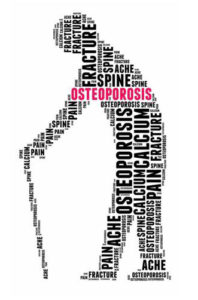 Everybody wants to maintain optimal height during their adult lifetime. But height loss is a common part of the aging process. We may notice tall elderly people with great posture, but unfortunately, they are a distinct minority.
Everybody wants to maintain optimal height during their adult lifetime. But height loss is a common part of the aging process. We may notice tall elderly people with great posture, but unfortunately, they are a distinct minority.
There are two kinds of height loss. All of sudden at a doctor’s office visit, you find out you are an inch shorter. Commonly heard is “I used to be 5’8 and now I’m 5’6; what happened?” The other height loss is more noticeable, being bent over. We don’t like that any better, but we’re more aware of that physical change which may be accompanied by pain or discomfort.
As we age, height loss often occurs as the soft discs, which sit between the vertebral bones in our backs lose water and don’t do their job, maintaining your previous height. This type of height loss is subtle and painless. More acute height loss is often accompanied by significant pain in the mid-back region, corresponding to the thoracic spine, resulting from a compression fracture or collapse of one of the bony vertebrae. We see a lot of this as a consequence to osteoporosis (a silent disease defined by a decrease in bone mass resulting in an increased risk of fracture). The most important piece of information you can seek is an evaluation as to why you have osteoporosis.
An x-ray or a DEXA bone density study is valuable to provide information about osteopenia (you might be in the beginning stage of possible height loss) fractures and/or osteoporosis, all of which can compromise height. The DEXA, which can include a lateral picture of the thoracic spine, will make the diagnosis of a compression fracture. If the fracture occurs without severe trauma such as a car accident or fall off a ladder, it is considered a fragility or low-impact fracture; an example is a fall from a standing position to the floor. Even if the DEXA results are normal, patients still need treatment for osteoporosis. Men need to be evaluated for causes of osteoporosis such as steroid exposure (i.e. prednisone) or low testosterone. More rare causes need evaluation for such problems as multiple myeloma, a form of cancer.
Sometimes, kyphoplasty, where a radiologist places “medical cement” into the collapsed vertebra, can prevent further height loss and stabilize the spine. It is vitally important to do everything possible to treat osteoporosis and vertebral compression fractures. Like dominoes, the first compression fracture is the greatest risk for the next one, so treatment and stabilization should be undertaken as soon as possible.
In addition to medical evaluation and tests, as with everything we do to maintain good health and a quality of life, here is what our bones and spine health deserve and benefit from: a nutritious and balanced diet, exercise and fresh air, and proper rest. Our bodies are fantastic machines that can benefit from proper maintenance!

